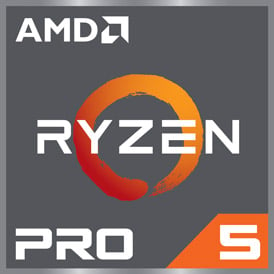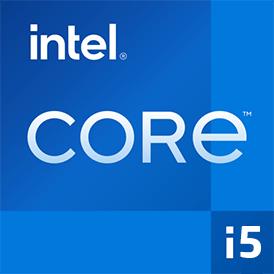 Geekbench 3, 64bit (Multi-Core)
Geekbench 3, 64bit (Multi-Core)
|
|
AMD Ryzen 5 PRO 1600
6C 12T @ 3.2 GHz
|
20754
|
|
|
Intel Core i5-7500
4C 4T @ 3.4 GHz
|
12167
|
 Estimated results for PassMark CPU Mark
Estimated results for PassMark CPU Mark
|
|
AMD Ryzen 5 PRO 1600
6C 12T @ 3.2 GHz
|
10330
|
|
|
Intel Core i5-7500
4C 4T @ 3.4 GHz
|
6028
|
 V-Ray CPU-Render Benchmark
V-Ray CPU-Render Benchmark
|
|
AMD Ryzen 5 PRO 1600
6C 12T @ 3.2 GHz
|
5594
|
|
|
Intel Core i5-7500
4C 4T @ 3.4 GHz
|
2360
|
 Geekbench 5, 64bit (Multi-Core)
Geekbench 5, 64bit (Multi-Core)
|
|
AMD Ryzen 5 PRO 1600
6C 12T @ 3.2 GHz
|
4970
|
|
|
Intel Core i5-7500
4C 4T @ 3.4 GHz
|
3091
|
 Geekbench 3, 64bit (Single-Core)
Geekbench 3, 64bit (Single-Core)
|
|
Intel Core i5-7500
4C 4T @ 3.4 GHz
|
4055
|
|
|
AMD Ryzen 5 PRO 1600
6C 12T @ 3.2 GHz
|
3920
|
 Cinebench R15 (Multi-Core)
Cinebench R15 (Multi-Core)
|
|
AMD Ryzen 5 PRO 1600
6C 12T @ 3.2 GHz
|
1094
|
|
|
Intel Core i5-7500
4C 4T @ 3.4 GHz
|
617
|
 Geekbench 5, 64bit (Single-Core)
Geekbench 5, 64bit (Single-Core)
|
|
Intel Core i5-7500
4C 4T @ 3.4 GHz
|
961
|
|
|
AMD Ryzen 5 PRO 1600
6C 12T @ 3.2 GHz
|
894
|
 iGPU - FP32 Performance (Single-precision GFLOPS)
iGPU - FP32 Performance (Single-precision GFLOPS)
|
|
Intel Core i5-7500
4C 4T @ 3.4 GHz
|
422
|
 Cinebench R11.5, 64bit (Multi-Core)
Cinebench R11.5, 64bit (Multi-Core)
|
|
AMD Ryzen 5 PRO 1600
6C 12T @ 3.2 GHz
|
12.1
|
|
|
Intel Core i5-7500
4C 4T @ 3.4 GHz
|
6.5
|
 Cinebench R11.5, 64bit (Single-Core)
Cinebench R11.5, 64bit (Single-Core)
|
|
Intel Core i5-7500
4C 4T @ 3.4 GHz
|
2.0
|
|
|
AMD Ryzen 5 PRO 1600
6C 12T @ 3.2 GHz
|
1.8
|

